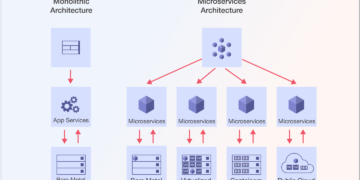In the dynamic landscape of modern business, achieving organizational goals requires more than just ambition; it demands a strategic approach that aligns every team member toward a common objective. This is where OKR Solutions (Objectives and Key Results) come into play, serving as a powerful tool for setting and achieving goals. However, the effectiveness of OKRs hinges not just on their implementation but also on the solutions and strategies employed to ensure their successful execution.
This article will explore OKR solutions, various approaches, and best practices to maximize their impact on organizational performance.
Before delving into OKR
solutions, it’s crucial to understand the fundamental concept of OKRs
Understanding the Essence of OKRs
Before delving into OKR solutions, it’s crucial to understand the fundamental concept of OKRs. At its core, OKRs are a goal-setting framework that helps organizations define objectives and track their progress using measurable vital results. Objectives represent the desired outcomes or goals, while key results are specific, quantifiable milestones indicating progress.
Challenges in OKR Implementation
While the concept of OKRs is relatively straightforward, their successful implementation can be challenging. Many organizations struggle with everyday obstacles, such as lack of alignment, unclear objectives, and difficulty tracking progress. Without practical solutions, these challenges can impede the effectiveness of OKRs and hinder organizational success.
Effective OKR Solutions
- Precise Objective Setting: The foundation of a successful OKR framework lies in setting clear and actionable objectives. Organizations should invest time in defining objectives that are specific, measurable, achievable, relevant, and time-bound (SMART). Additionally, objectives should be aligned with the organization’s overarching goals and mission.
- Alignment Across Levels: Achieving alignment is essential for ensuring that individual, team, and organizational objectives work towards the same overarching goals. Implementing OKR solutions that facilitate alignment, such as cascading objectives from top-level leadership to individual contributors, can help ensure synergy across the organization.
- Transparent Communication: Open and transparent communication is vital for successfully implementing OKRs. Organizations should foster a culture of transparency where objectives, progress, and results are openly shared across teams. OKR software platforms that provide visibility into objectives and progress can facilitate communication and collaboration among team members.
- Regular Monitoring and Feedback: Continuous progress monitoring is essential for identifying potential roadblocks and making necessary adjustments to stay on track. Implementing OKR solutions that enable real-time tracking of critical results and provide regular employee feedback can help keep teams focused and motivated toward achieving their objectives.
- Adaptability and Flexibility: In today’s rapidly changing business environment, adaptability is critical to success. Organizations should embrace OKR solutions that allow flexibility in adjusting objectives and critical results as priorities shift or market conditions change. This flexibility ensures that OKRs remain relevant and impactful amidst evolving circumstances.
- Data-Driven Insights: Leveraging data and analytics can provide valuable insights into the effectiveness of OKRs and inform strategic decision-making. OKR solutions that offer robust reporting and analytics capabilities enable organizations to assess performance, identify trends, and make data-driven adjustments to their strategies.
- Employee Empowerment: Engaging employees in the OKR process is crucial for fostering ownership and accountability. Providing training and resources to help employees understand the OKR framework and its importance empowers them to set meaningful objectives and take ownership of their key results. Encouraging autonomy and initiative allows employees to drive success within their respective roles.
Case Studies: Exemplary OKR Solutions in Action
To further illustrate the effectiveness of OKR solutions, let’s examine a few case studies of organizations that have successfully implemented OKRs:
- Google: Perhaps the most famous adopter of OKRs, Google attributes much of its success to the disciplined implementation of the framework. Google encourages transparency and alignment by cascading OKRs from the company level down to individual teams and employees. Additionally, Google emphasizes continuous learning and improvement, regularly refining its OKR process based on feedback and data insights.
- Salesforce utilizes OKRs to drive alignment and focus across its global workforce. By setting ambitious yet achievable objectives and tracking progress with measurable vital results, Salesforce ensures that every employee is aligned with the company’s strategic priorities. Salesforce also emphasizes the importance of regular check-ins and feedback sessions to keep teams on track and address any challenges.
- LinkedIn: LinkedIn leverages OKRs to drive innovation and execution across its diverse business units. LinkedIn emphasizes the importance of setting aspirational objectives that inspire employees to stretch beyond their comfort zones while providing the support and resources necessary for success. LinkedIn also emphasizes the role of leadership in modeling OKR best practices and fostering a culture of accountability and transparency.
Conclusion
In conclusion, effective OKR solutions are essential for unlocking the full potential of the OKR framework and driving organizational success. By implementing precise objective settings, fostering alignment and communication, embracing adaptability and flexibility, and empowering employees, organizations can maximize the impact of their OKR initiatives. With the right solutions, OKRs can be a powerful catalyst for achieving strategic goals, driving innovation, and fostering a high-performance and accountable culture.































